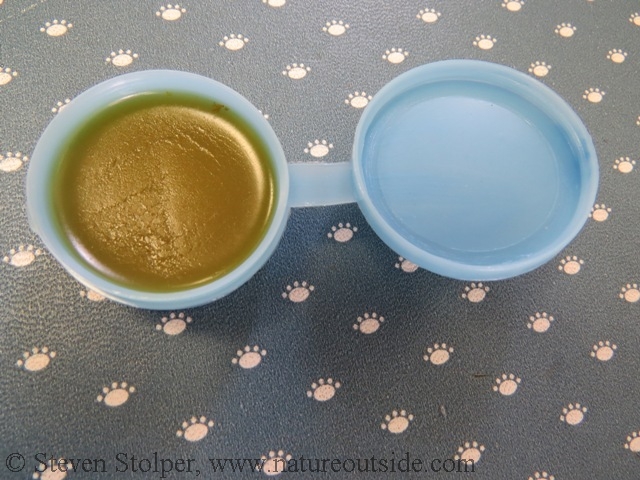
This post describes my experience helping make a general-purpose skin conditioning salve. It illustrates some general principles to guide you as you learn to process medicinal plants.
Plant Class
I was fortunate to take a medicinal plant class with Kathi Keville. Kathi is a renowned herbalist, founder of the American Herb Association and author of numerous books on herbal topics.
I consider myself a “wild edibles” guy. So I was not very motivated to learn about medicinal plants. I felt their field-expedient uses were interesting, but I usually travel with a well-stocked first aid kit.
But my opinion changed quite drastically after taking this course. Kathi’s enthusiasm is contagious! I reveled in the challenge of finding plants and producing medicines that could benefit me. If I’m in a car accident, I will see the surgeon. But for many minor medical complaints, I may just brew my own.
Disclaimers:
|
Making Our Skin Salve
Here’s the process we followed. You can use it when you formulate your own skin salve:
- Choose what you are trying to do.
- Select Ingredients
- Extract desired compounds (oil base)
- Strain
- Add beeswax to obtain consistency that makes it easy to apply.
We wanted to make a general purpose skin salve that had the following properties (in order of importance):
- Skin Healing
- Antibacterial
- Anti-inflammatory/Reduce pain
What was on hand from our foraging?
- Skin healing – Yarrow, Penstemon, Elder flower, Self Heal, Indian Paintbrush
- Antibacterial – Yarrow, pine needles, cedar needles, Mountain Misery, Self Heal
- Anti-inflammatory – St. John’s Wort, Yarrow
- Reduce Pain – Arnica, Mountain Misery, St. John’s Wort
We eventually decided on 11 ingredients (pictured below). In the case of the willow bark, we separated the cambium layer from the outer bark after stripping it from the branches we collected. All of the ingredients were finely chopped.
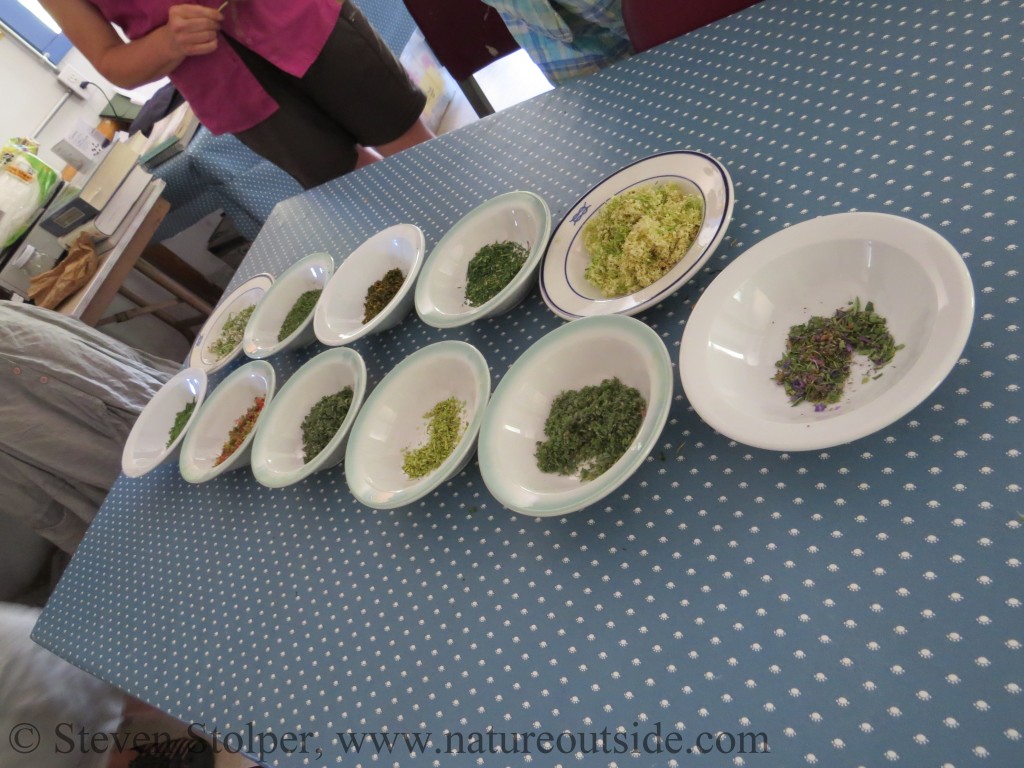
Ingredients
Here are close ups of some of the more interesting ingredients.
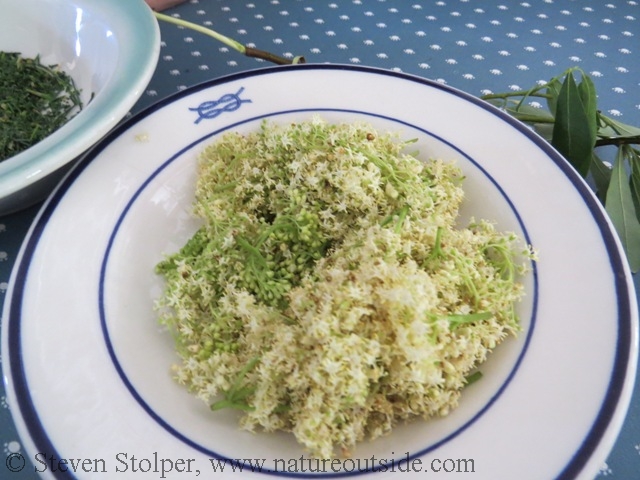
Elderflower
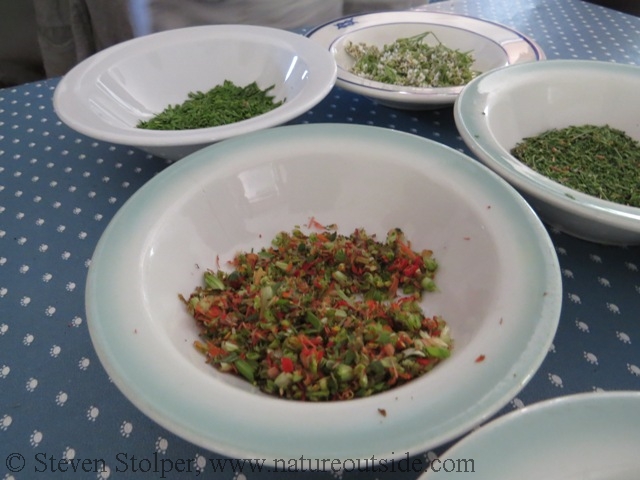
Indian Paintbrush
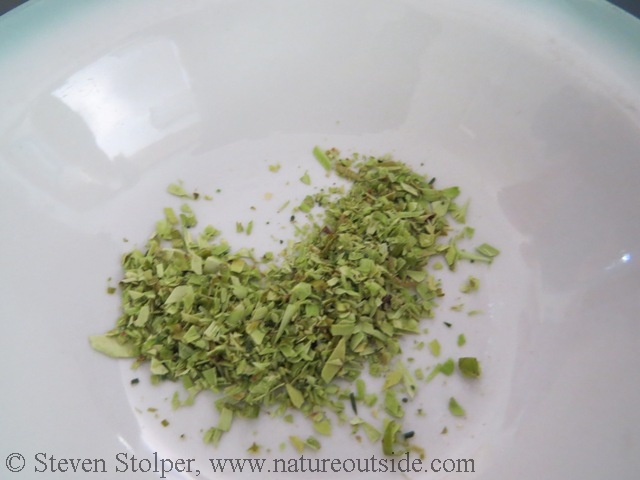
Willow Bark
After chopping, we combined the materials in a pot. We added expeller pressed (virgin) olive oil until all of the plant material was permeated and covered. Our goal was to extract the oil-soluble compounds from the plant material. We heated on *very low* heat for about 3 hours. We let the mixture sit overnight.
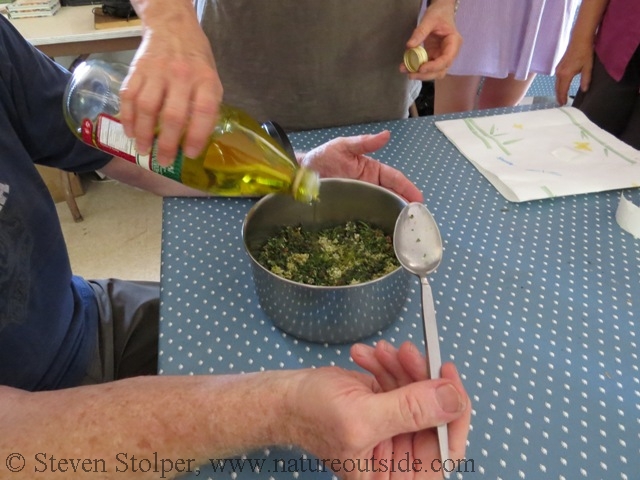
Pouring the olive oil
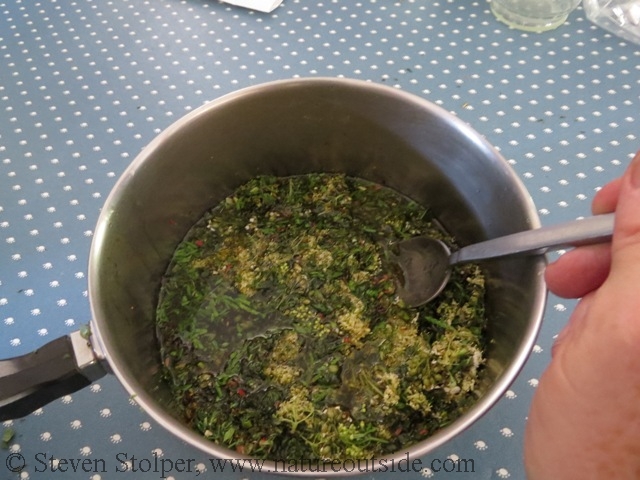
Mixing to saturate all of the plant material
We then strained out the plant material and were left with a “medicated oil”. We added melted beeswax to thicken the solution. This changed our medicated oil into a salve. The salve is much easier to carry and apply. We used 3/4 ounce (weight) of beeswax to 1 cup of medicated oil.

The finished salve
There were other tips we learned that would allow us to make lip balm, or add scent to the salve.
This was an extremely valuable learning experience and tons of fun!!! As an added bonus, I have been using the salve on my mosquito bites and they have shown more improvement than if I had just left them alone.
I hope you find this useful. If you want to experiment, I suggest you pick up one of Kathi’s books.
Related Articles on NatureOutside
Bushcraft Dessert – Make a Lavender Dip for Strawberries
Willow Bark – Using Ancient Aspirin
For fun facts and useful tips, join the free Bushcraft Newsletter.


Very interesting read might give this a try.
Scott, you can also use herbs from your garden, if you grow them. Let us know if you try it and how it works out!